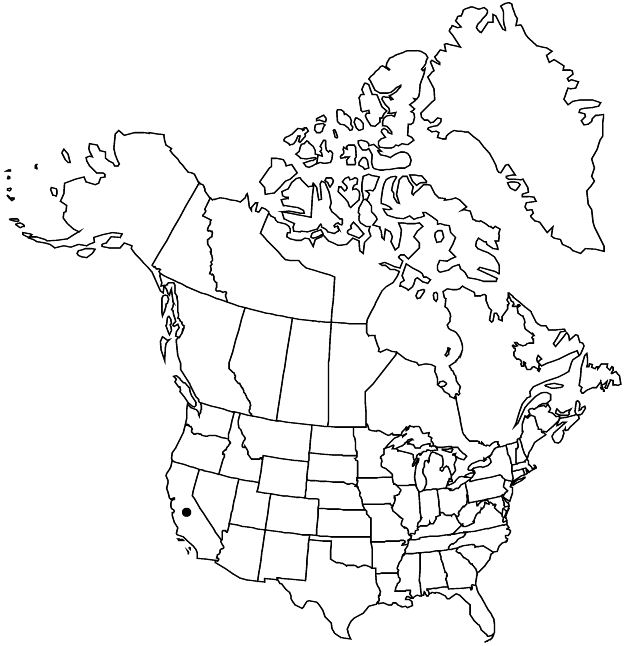Hesperolinon congestum
N. Amer. Fl. 25: 86. 1907.
Herbs, (5–)15–30(–45) cm, glabrous or glabrate; branches from distal nodes, alternate, strongly virgate (proximal unbranched main axis usually long in comparison to branched distal portion). Leaves alternate; stipular glands present; blade linear, (5–)15–25 × 1–1.5(–2) mm, base flat, not clasping, margins eglandular or glands minute. Inflorescences: cymes monochasial, dense, sparingly branched, internodes sometimes all condensed or long proximally and condensed distally, flowers condensed at apices; bract margins eglandular. Pedicels 0.5–2(–5) mm, scarcely longer in fruit, ascending, not bent at apex. Flowers: sepals erect, ± reflexed at tip, lanceolate, 3–4 mm, equal, margins minutely glandular, surfaces hairy, hairs intertwined or matted; petals ± reflexed, pink to rose, oblanceolate, (3–)6–7(–8) mm, apex obtuse, sometimes slightly notched; cup white, rim with petal attachments set in deep notches between filaments; stamens exserted; filaments 4–5 mm; anthers rose to purple, dehisced anthers 1.5–2 mm; ovary chambers 6; styles 3, white, (3–)4–4.5(–5) mm, exserted. 2n = 36.
Phenology: Flowering Apr–Aug.
Habitat: Grasslands on serpentine soils.
Elevation: 0–200 m.
Discussion
Hesperolinon congestum is known from a narrow band within the Outer Coast Ranges from Marin County south to San Mateo County. It can be distinguished from all other species in the genus by its hairy sepals.
Selected References
None.
